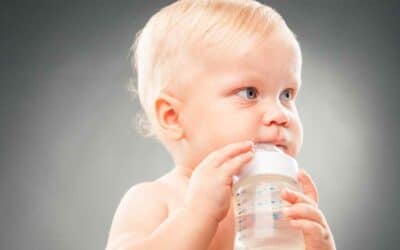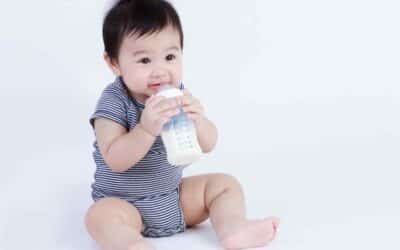As your baby grows and develops, transitioning from a bottle to a sippy cup is an important milestone that not only encourages independence but also helps improve their oral motor skills. With many sippy cups available on the market, finding the perfect one for your little one can seem daunting.
Fear not, parents!
This article will guide you through the world of sippy cups, showcasing the best options available and providing valuable tips on choosing the ideal cup for your baby’s needs. Join us as we navigate the exciting journey of discovering the perfect sippy cup, ensuring a smooth and successful transition for both you and your child.
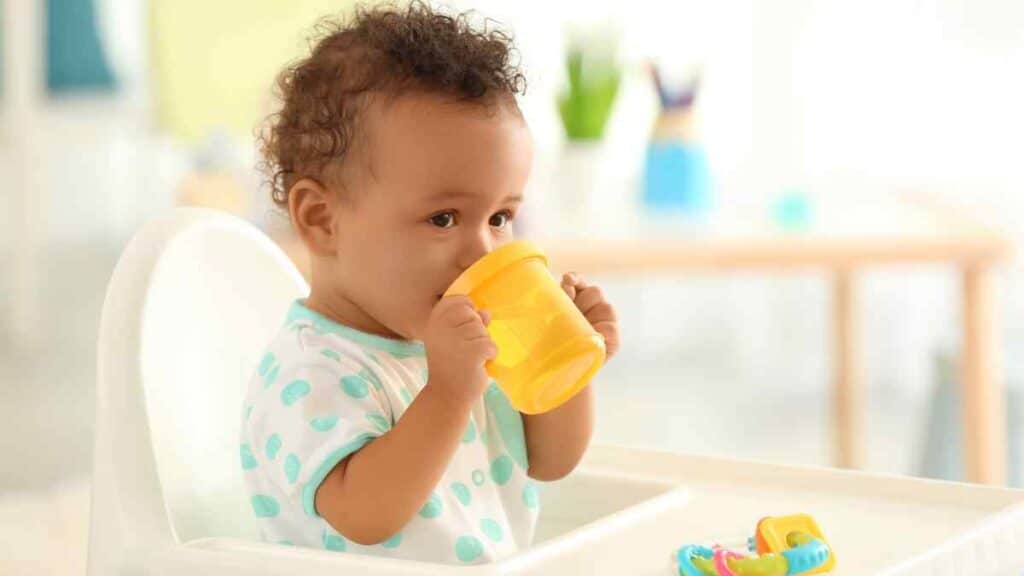
Primary Types of Sippy Cups
As your baby transitions from the bottle to a sippy cup, it’s essential to find the right type that best suits their needs and developmental stage. With a variety of sippy cups on the market, knowing the primary types and their unique features will help you make an informed decision. Let’s explore the five primary types of sippy cups: hard spouts, straw cups, 360 cups, weighted cups, and two-handed cups [1].
- Hard Spout
Sippy Cups These sippy cups feature a rigid spout, similar to the nipple of a baby bottle but firmer. Hard spout sippy cups are often the first choice for parents when transitioning from a bottle, as they are designed to be leak-proof and help babies practice drinking from a more traditional cup. However, prolonged use of hard spout cups can potentially impact your child’s developing teeth, so it’s essential to transition to another type of sippy cup as your baby grows. - Straw Cups
Straw cups are an excellent option for babies who are ready for a more advanced drinking experience. These cups encourage babies to use their tongues and lips to create suction, promoting the development of oral motor skills. Straw cups can also help prevent tooth decay, as the liquid is directed toward the back of the mouth, bypassing the teeth. - 360 Cups
Also known as rimless or spoutless cups, 360 cups feature a unique design that allows babies to drink from any part of the rim. These cups are designed to be leak-proof, only releasing liquid when your baby applies pressure to the rim. The 360 cup encourages a more natural drinking style, similar to a regular cup, and is suitable for babies comfortable with straw sippy cups. - Weighted Cups
Weighted sippy cups feature a straw with a weighted end, ensuring that your baby can drink from any angle. These cups are particularly helpful for babies who are still learning to hold a sippy cup independently and may tilt it at various angles. Weighted cups can be found in both straw and spout designs. - Two-Handled
Cups Designed with two handles on either side, these sippy cups make it easier for babies to grasp and hold independently. Two-handled sippy cups provide extra stability and can be found in various designs, including hard spouts, straws, and 360 cups.
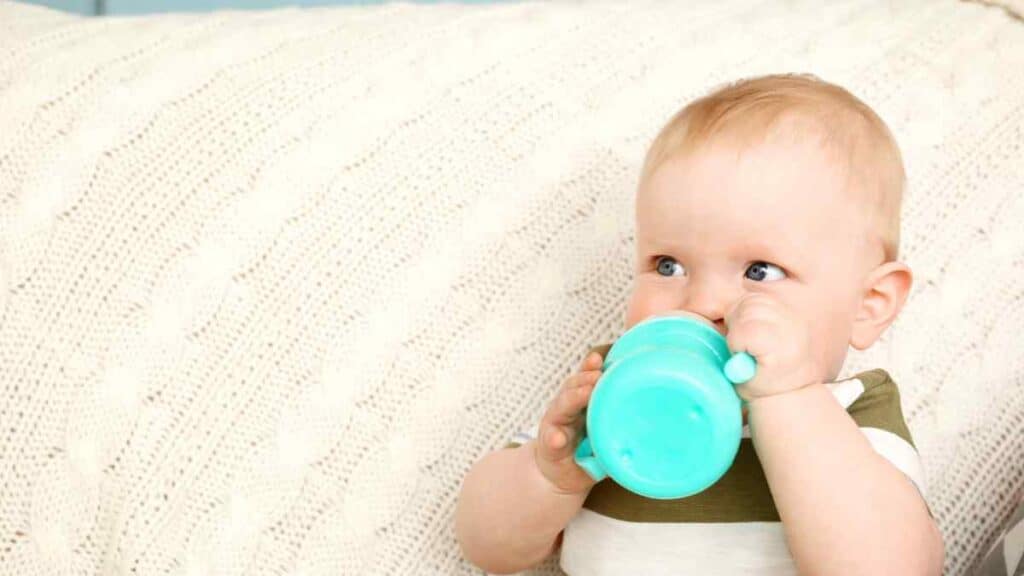
Each type of sippy cup offers unique benefits, and the ideal choice will depend on your baby’s age, developmental stage, and personal preferences. It’s essential to observe your baby’s drinking habits and be prepared to try different types of sippy cups to find the one that works best for them.
How to Select the Best Sippy Cup
Now that you have a better understanding of the different types of sippy cups, let’s delve into the essential factors to consider when selecting the best option for your child. Here are some practical tips to guide you in making an informed decision that suits your baby’s developmental stage and preferences.
- Age-appropriateness
When selecting a sippy cup, it’s crucial to consider your baby’s age and developmental milestones. Cups with soft spouts or silicone nipples are more suitable for younger babies, while those sippy cups with harder spouts, straws, or 360-degree rims cater to older babies and toddlers with more advanced oral motor skills. - Ease of Use
Look for a sippy cup that is easy for your baby to grasp and hold independently. Handles or contoured designs can help your little one gain confidence in their self-feeding abilities. Additionally, a sippy cup with a spill-proof or leak-proof design can minimize messes and make the transition less frustrating for both you and your child. - Material Safety
Opt for sippy cups made from BPA-free and phthalate-free materials, such as food-grade silicone, stainless steel, or high-quality plastic. These materials ensure the safety and well-being of your baby as they enjoy their drinks.
- Capacity and Size
Consider the size and capacity of the sippy cup in relation to your baby’s needs. Smaller cups are ideal for younger babies, while larger capacities are more suitable for toddlers who consume more significant amounts of liquids. - Ease of Cleaning
A sippy cup with minimal parts or components that are easy to disassemble and reassemble will make cleaning a breeze. Dishwasher-safe options can further simplify the cleaning process and save you time. - Durability and Longevity
Invest in a sippy, durable sippy cup built to withstand the rough-and-tumble nature of baby-led feeding. A sturdy, high-quality sippy cup will last longer and minimize the risk of breakage or leakage. - Personal Preferences
Finally, consider your baby’s unique preferences, such as color or design, and any specific needs they may have. This might include a preference for a particular sippy cup spout type or a requirement for additional features like weighted straws for babies who struggle with tilting their sippy cups.
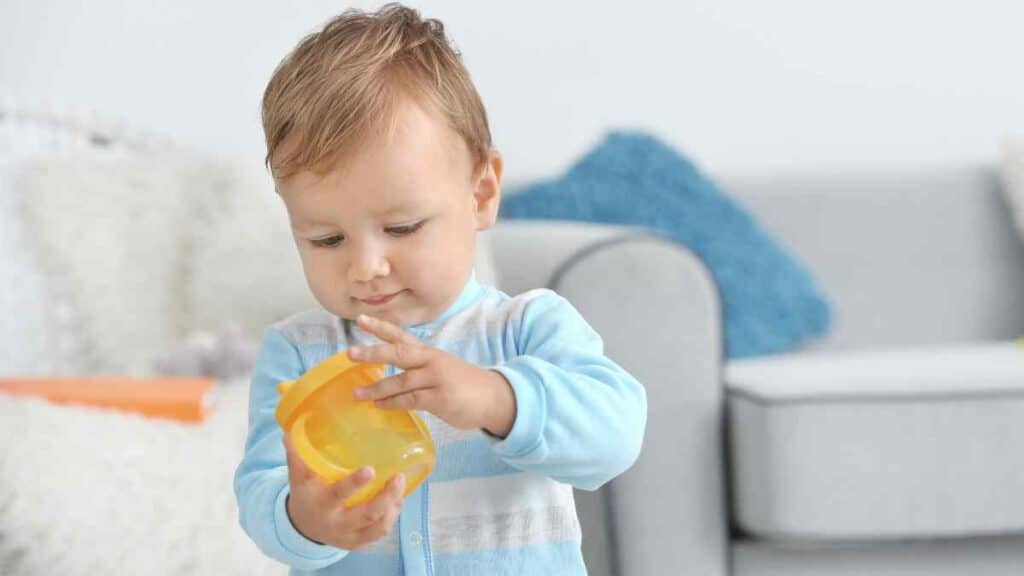
How to Help Your Baby Transition to Sippy Cups
- Start with the Right Age
Pediatricians recommend introducing a sippy cup when your baby is around 6 to 9 months old. Most babies have developed the motor skills necessary to hold and drink from a cup at this age. Keep in mind that each child is unique, so it’s important to follow your baby’s individual developmental cues. - Choose an Age-Appropriate Design
As we discussed in the previous column, sippy cups come in various designs, with features like handles, spouts, and straw options. To begin with, opt for a sippy cup with a soft spout or a straw and handles that make it easy for your baby to grasp and control.
- Offer Small Amounts
When first introducing the sippy cup, start by offering small amounts of breast milk, formula, or water [2]. This will allow your baby to become familiar with the new drinking method without feeling overwhelmed. - Make It Fun and Engaging
Encourage your baby to explore the sippy cup by making it a fun and engaging experience. Choose sippy cups with bright colors, fun designs, or characters that your baby loves, and praise them for their efforts to hold and drink from the sippy cup. - Be Patient and Consistent
Transitioning to a sippy cup can take time and patience. Offer the sippy cup consistently during mealtimes and throughout the day, and be prepared for some spills and messes along the way. Remember that practice makes perfect, so don’t be discouraged if your baby takes time to master this new skill. - Gradually Reduce Bottle Use
As your baby becomes more comfortable with the sippy cup, gradually reduce the number of bottles offered throughout the day. Replace one bottle feeding with a sippy cup session and continue this process until your baby is solely using the cup. - Set a Positive Example
Babies learn by observing their surroundings and often imitate the actions of those around them. Make a point to drink from your own cup during mealtimes, demonstrating the proper technique and showcasing the enjoyment of using a sippy cup.
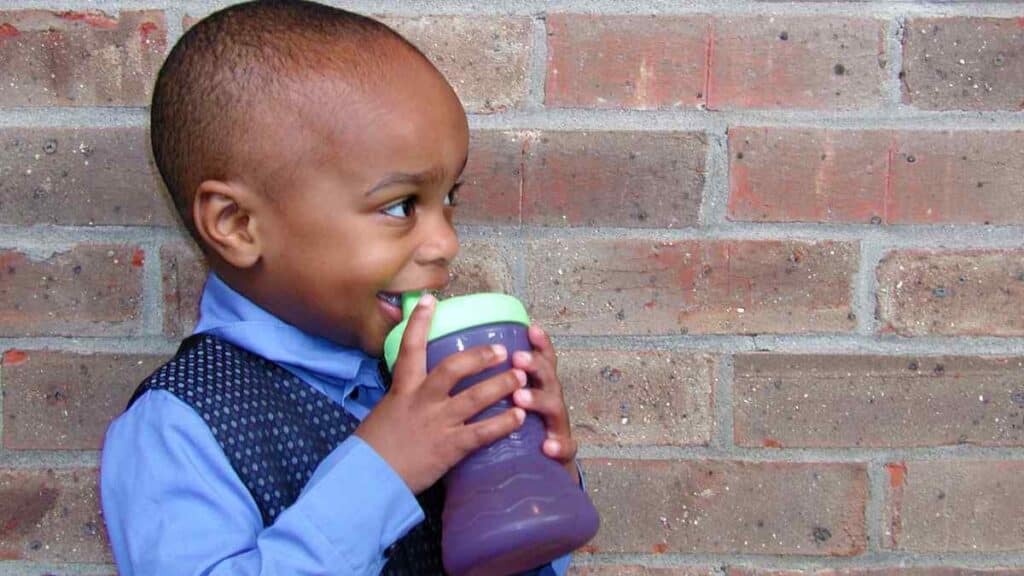
Sippy Cups for Toddlers
Best Leak-free Sippy Cup
Munchkin Miracle 360 Stainless
One of the best sippy cup products on the list is Munchkin Miracle 360 Trainer. It is premium insulated and made of a vacuum-sealed stainless-steel cup that can keep your baby’s drink cool for up to 15 hours. Many dentists also recommend its 360-degree drinking edge, drastically reducing the chances of spillage. It’s also top-rack dishwasher safe, making it easy to clean.
Tommee Tippee Insulated Sipper Tumbler
Tommee Tippee Insulated Sipper Tumbler has an insulated double wall that helps retain its temperature even for a long period. It also has a spill-proof valve that keeps the mess to a minimum. Many also consider it to be a soft spout sippy cup, making it gentle on your baby’s gums. But what makes it a part of the best sippy cup list is that it’s free of BPA, BPS, and phthalates, making it safe for babies.
Munchkin Miracle 360 Trainer Cup
Munchkin Miracle 360 Trainer is one of the best sippy cups with a set of 2. Like Munchkin Miracle 360 Stainless, it also has a unique design that automatically seals when your baby is done drinking. This Munchkin Miracle 360 cup also has an easy-to-grip handle, making it easy for your baby’s little hands to hold. It’s also made of BPA-free plastic and is top-rack dishwasher safe.
NUK Learner Cup
NUK Learner Cup includes 2 soft spout plastic sippy cups which can be effective at helping your baby transition from bottle to training cup. This strawberry sippy cup also has an air vent to let the water flow easily when sipped. Same with the other best sippy cups on the list, it’s also spill-proof, making it easy to clean your baby after drinking.
Elk and Friends Stainless Steel
Another of the best sippy cups made with stainless steel is Elk and Friends Stainless Steep training cups. Like Munchkin Miracle 360 Trainer Stainless Steel, it also has a leak-proof and airtight design, perfect for drinking water or food storage. This stainless-steel sippy cup also has unique silicone sleeves as part of its design, making it easier to grip than other transitional sippy cup designs.
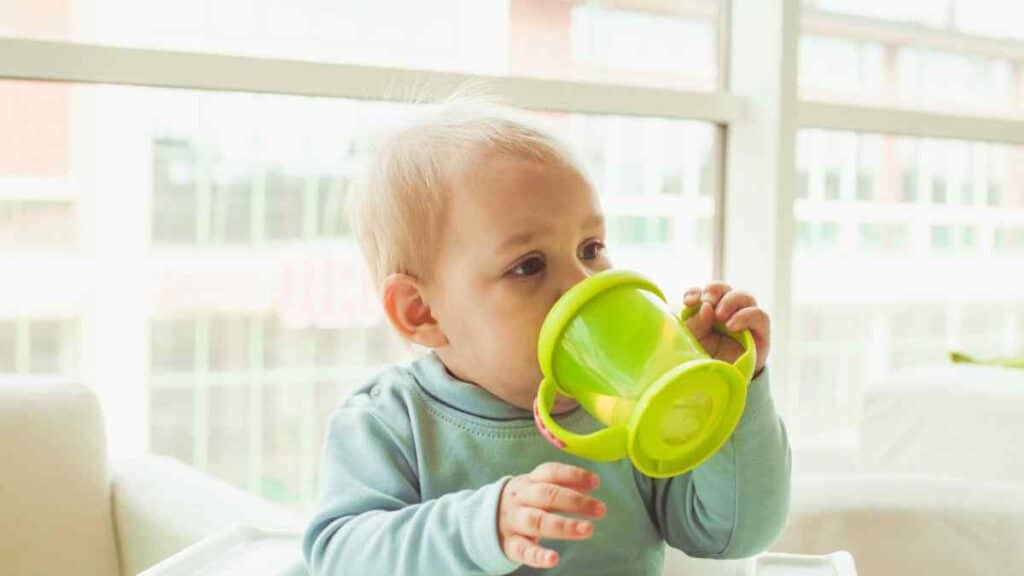
Best Spout-Lid Sippy Cup
Thermos Foogo Sippy Cup
The Thermos Foogo Sippy Cups have interchangeable parts that can suit your child’s needs no matter their age. Compared to open cups and no-valve sippy cups, this leak-proof sippy cup has a hard spout design meant to resist teething wear. It’s also top-rack dishwasher safe and has a unique contoured shape designed for easy gripping.
Re-Play No-Spill Sippy Cups
Out of all the best sippy cups on the list, Re-Play No-Spill Sippy Cups is the most environmentally friendly. Not only is it safe for your baby to use, but these recycled milk jugs are also made with sustainable recycled materials that are non-toxic and Melamine-free. These plastic cup products are also stackable, making it effective for saving storage space.
Munchkin Latch Transition Cup
Another one of the best sippy cup products in the market is the Munchkin Latch Transitional Sippy Cup. It has a soft spout that moves with your baby every time they use it. It also has an anti-colic valve that prevents air bubble build, which helps reduce your baby’s fussiness and gassiness. But what turns this seemingly regular cup into a unique training cap is its removable handles. These silicone handles are detachable and ergonomic, making it easier for your babies to hold them.
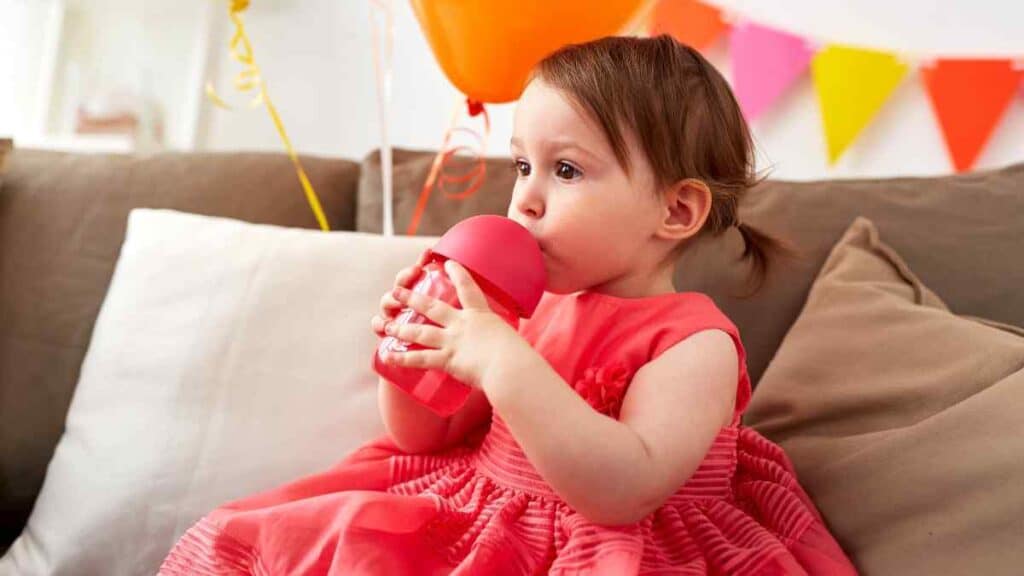
Best Insulated Sippy Cup
Munchkin Any Angle Click Lock Weighted Straw Trainer Cup
Munchkin Any Angle Click Lock Trainer Cup is a straw cup with easy-to-hold handles that make it easy for your toddler to hold the spill-proof sippy cup and drink from its silicone straw. It also has a 10-ounce capacity for liquid and is small enough to fit inside your diaper bag. Both the silicone straw and the spoutless sippy cup are made from BPA-free plastic, making them safe for your baby. Similar to Miracle 360 trainer cup, it’s also dishwasher safe.
Oxo Tot Transitions Straw Cup with Handles
Oxo Tot Transition Cups use a weighted straw instead of a hard spout to help your baby drink liquid from the cup. It has an almond-shaped design that conforms to a baby’s mouth to reduce mess. These open cups are also small enough to store in your diaper bag, which can be suitable for those who are always traveling.

Conclusion
Choosing the right sippy cup for your baby can make a big difference in their ability to transition from bottles to open cups. While many options are available, considering the material, dishwasher safety, and ease of use can help you find the perfect fit for your family. Open cups and weighted straw cups can be great options for developing motor skills and reducing spills.
In contrast, traditional baby bottles and straw cups can provide a familiar and comforting experience. Ultimately, the most important thing is to find a sippy cup that works well for your baby and your lifestyle, so feel free to try a few different options until you find the perfect one.
Did this article help you? We’d love to hear from you! Please let us know in the comments.

